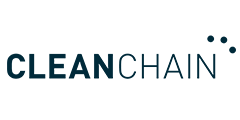Disclosing Scope 3 Emissions – Are You Ready?
Article
Scope 3 emissions are indirect GHG emissions resulting from a company’s activities generated from sources not owned or controlled by that company.
Gathering accurate and actionable data on Scope 3 greenhouse gas (GHG) emissions is a huge challenge for the thousands of companies globally that will need to comply with EU and US climate disclosure rules. And while there is no one-size-fits-all roadmap for gathering this data, the challenges are hardly insurmountable.
What are Scope 3 emissions?
Scope 3 emissions are indirect GHG emissions resulting from a company’s activities generated from sources not owned or controlled by that company. These emissions extend beyond direct operations (Scope 1 emissions) and indirect energy consumption (Scope 2 emissions). Instead, they encompass the entire lifecycle of a product or service, from raw material extraction to end-of-life disposal, considering the entire supply chain. As such, Scope 3 emissions often comprise up to 90% of a company’s total emissions, depending on the industry.
Which Scope 3 categories are right for you?
In GHG Protocol-speak, “setting the organizational boundary” means determining which categories of Scope 3 emissions to include in your company’s inventory.
With 15 different categories of emissions to choose from, that can take some work. The GHG Protocol’s approach requires companies to determine which Scope 3 emissions categories they use based on what’s called the “relevance test.” Some of the factors for determining relevance include:
- Size: Companies should prioritize measuring emissions from activities that contribute significantly to the company’s total expected Scope 3 emissions.
- Influence: Companies should focus on measuring emissions that the business is well positioned to directly reduce or influence.
- Risk: Companies should prioritize measuring those emissions that most contribute to the firm’s operating, strategic, regulatory or reputational risk exposure.
- Stakeholders: Companies should prioritize emissions deemed critical by key stakeholders (e.g., customers, suppliers, investors or civil society).
You can find the Scope 3 categories most likely to be important for your sector in CDP’s guidance and in the standards developed by the Sustainability Accounting Standards Board (SASB). However, to do this well, many companies seek out external expertise to determine their material categories using the relevance test.
How to climb the GHG emissions calculation “ladder”
Many companies start out measuring their Scope 3 inventories using methods that rely heavily on rough “spend-based” estimates. This is a good start, but growing interest in Scope 3 data from regulators, investors and customers means that data quality must improve.
Generally speaking, a higher-quality Scope 3 data collection strategy prioritizes gathering data using calculation methods that are higher on the GHG calculation method “ladder,” such as activity or hybrid-based calculation approaches that leverage primary supplier data.
Each Scope 3 category has its own rules around how to calculate emissions, so we recommend reviewing the GHG Protocol’s Corporate Value Chain (Scope 3) Accounting and Reporting Standard for guidance on various calculation methods. ADEC ESG Solutions also provides a useful guide on Carbon Accounting Methods for Estimating Scope 3 Emissions and how to better understand your GHG inventory.
Fed up with being ignored? Engage suppliers effectively, at scale.
For many organizations, Scope 3 emissions and supplier engagement are almost intrinsically linked. However, suppliers can naturally be reluctant to answer emissions data requests, and resources are often short to chase them down or incentivize and support their efforts.
So, how should you engage suppliers at scale in an efficient and productive way? Software is one part of the answer – SaaS-based solutions can help you efficiently and thoughtfully engage and collect data from your suppliers. But additional people are needed. Many companies extend the reach of their sustainability and procurement teams through outsourced experts who sit in the time zones and speak the languages of their suppliers, assisting with data collection while also delivering technical assistance and emissions reduction advising.
Getting ahead of the curve with Scope 3 Data
Deliver your audit-ready Scope 3 data using a strong foundation of well-defined boundaries, robust calculation approaches and high-quality supplier reporting. ADEC’s Scope 3 solution helps clients gather, process, visualize and deliver Scope 3 data where it’s needed, when it’s needed, so you can meet compliance requirements and gain the insights you need to achieve meaningful emissions reductions.
Get in touch: dataassured@adec-innovations.com




